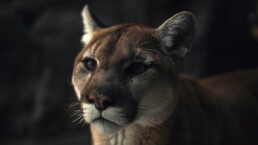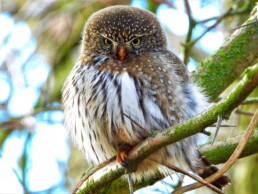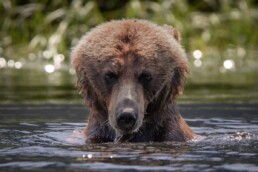You don’t have to look far to spy the beautiful Western Tiger Swallowtail during the summer months in Castlegar, British Columbia.
The Western Tiger Swallowtail is a large, brightly coloured butterfly that favours open, sunny habitat, which is why it loves Castlegar. In fact, this beautiful butterfly is one of the most common sites in the area through the summer months, especially in June and July.
Also known as:
- Papilio rutulus
- kulilu (Ktunaxa word for butterfly)
- stsuts̓wáy̓e (Secwepemc word for butterfly)
- pal̓wic̓yaʔ (nsyilxcǝn word for butterfly)
Description:
- A large, bright yellow butterfly with black stripes and small blue and orange dots at the base of its wings.
- It has triangular wings that are 7-10cm long, that taper to a fork, making the butterfly look like it has a swallow-like tail.
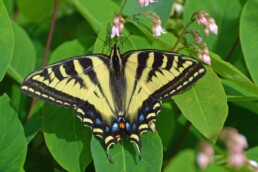
Habitat:
- This type of butterfly loves open sunny places, meadows, forest edges, riverbanks, riparian areas, and backyard gardens.
Viewing Opportunities:
- Western Tiger Swallowtails can be seen all over Castlegar in the summertime. Watch for them as you stroll or drive around town.
- This large yellow and black butterfly is easy to spot, but can be confused with other, less common swallowtails like the Pale Swallowtail and Anise Swallowtail.
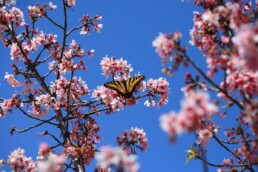
Behaviour:
- In flight, Western Tiger Swallowtails mostly glide, with fewer wing beats compared to other butterflies.
- They often congregate in large numbers at mud puddles (a behaviour called “puddling”) to drink water and obtain mineral nutrients.
- Adult butterflies feed on flower nectar and are valuable pollinators.
- They lay eggs on the leaves of host plants such as aspens and willows. Only four days later, the caterpillars will hatch and spend two weeks feeding on the host plant before pupating. If it is late in the season, the swallowtails will overwinter in the chrysalis and emerge as butterflies the following summer.
- Western Tiger Swallowtails live 6-14 days in butterfly form.
Diet:
- Eggs are laid on ‘host plants’ including aspen, cottonwood and willows that caterpillars will feed upon after hatching.
- Adult butterflies consume flower nectar.
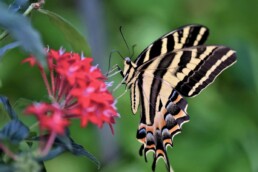
Connections:
- The Western Tiger Swallowtail is common and easy-to-spot thanks to its size, bright colours and tendency to fly in open sunny areas and urban gardens.
- A Butterfly Habitat Interpretive Garden opened in Syringa Provincial Park in 2023 to demonstrate the importance of native plants and native pollinators, like the Western Tiger Swallowtail. It was created in partnership between the Kootenay Native Plant Society and BC Parks and you visit the beautiful, informative site near the Bighorn Campground turnaround.
Cool Facts:
- The Western Tiger Swallowtail can hibernate in its chrysalis, emerging as a butterfly in the spring/summer.
- Hibernating swallowtails (in chrysalis) produce glycerol, an antifreeze compound, to help prevent them from freezing over the cold, winter months.
- Butterflies, including the Swallowtail can be distinguished from moths by their antennae: butterfly antennae are club-shaped with a bulb at the tip, while moths’ antennae are feathery or tapered at the tip. Butterflies also tend to hold their wings up vertically over their bodies (closed) at rest while moths hold theirs horizontally (open).
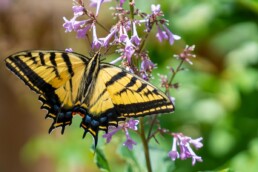
The goal of wildlife viewing is to safely appreciate the animals in their natural surroundings with minimal impact. To achieve that, here are eight tips:
- Be respectful. Getting too close or staying too long can disrupt feeding and other important behaviours and can cause stress and unpredictable behaviour.
- Give wildlife lots of space. If an animal responds to your presence (eg: looks up, watches you, moves away), you are too close.
- Viewing roadside wildlife can have negative impacts on wildlife by disrupting feeding and leading to habituation to traffic and people. If you spot wildlife while driving, pull over only if it is safe to do so and keep your stop short and sweet.
- Keep dogs on leash and under control at all times to avoid negative encounters
- Carry bear spray and know how to use it.
- Use binoculars and zoom lenses.
- Never feed wildlife.
- Leave no trace. Pack it in, pack it out.
Get To Know The Wildlife Of Castlegar
April 3, 2025
Meet Castlegar Photographer Jamie Isaacs
March 1, 2025
Meet Castlegar Photographer Josh Fogal
March 15, 2024


